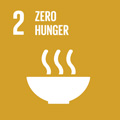- Docente: Cristina Giuliani
- Credits: 6
- SSD: BIO/08
- Language: Italian
- Moduli: Cristina Giuliani (Modulo 1) Roberto Impicciatore (Modulo 2)
- Teaching Mode: In-person learning (entirely or partially) (Modulo 1); In-person learning (entirely or partially) (Modulo 2)
- Campus: Bologna
-
Corso:
First cycle degree programme (L) in
Natural Sciences (cod. 5823)
Also valid for First cycle degree programme (L) in Biological Sciences (cod. 5982)
-
from Feb 24, 2026 to May 05, 2026
-
from May 06, 2026 to May 20, 2026
Learning outcomes
By the end of the course, students will have acquired knowledge of the evolution of the relationship between humans and the environment, bio-cultural adaptability and the dynamics of human populations. In particular, they will be able to: i) assess human adaptations to environmental stressors; ii) analyse the bio-demographic structure of human populations.
Course contents
MODULE 1 (PROF. GIULIANI) – 32 hours
This module examines the evolution of the relationship between humans and the environment, from ancient human settlement to contemporary challenges. Topics will include biological and cultural adaptations to extreme environments, physiological and epigenetic variability, and the effects of nutrition, aging, and urbanization. The approach is grounded in human biodiversity and comparative analysis of different human populations.
List of topics:
- The evolution of the human–environment relationship. Environmental changes throughout human evolutionary history. Past human migration. Hunter-gatherers. The Neolithic transition. Plant domestication and the origins of agriculture. Animal domestication.
- Human adaptability. Ecological niches and biological adaptation. Environmental stressors, homeostasis and human adaptability. Biological and cultural adaptations in extreme environments. Epigenetic variability. The concept of phenotypic plasticity. Examples related to nutrition, socioeconomic status and high-altitude environments.
- Physiological variability in different human populations and its relationship with the environment. Thyroid function in different human populations and its relationship with the surrounding environment. Populations adapted to environments rich in natural arsenic. Aging and longevity:
(i) The role of the elderly in different human populations and their connection to resources, habitats and subsistence economies;
ii) Sexual dimorphism in the ageing process and the female advantage;
iii) The relationship between energy trade-offs, growth, reproduction and ageing and resources. - Human ecology and nutrition. Cultural and technological evolution; lifestyle transformations; dietary changes; and maladaptation phenomena. An overview of modern diseases, focusing on malnutrition and obesity in the context of energy surplus.
- From the natural environment to the Anthropocene. Ethnic groups at risk of extinction. The origins of urbanisation and its impact on human biology.
MODULE 2 (PROF. IMPICCIATORE)– 16 hours
This module focuses on the evolutionary mechanisms of human populations, examining the relationships between demographic behaviours such as fertility, mortality and migration, and contextual factors. A long-term perspective enables us to examine global population development throughout human history, culminating in a discussion of recent demographic trends. The final part of the module is dedicated to the history of migration, aiming to highlight the connections between migration, the environment and society.
List of topics:
- The worldwide population over the long term
- Constraints, crises and self-regulation
- Resources and population
- The demographic transition
- Contemporary Demography (Population Structure, Ageing, Low Fertility)
- Migration, the environment and society.
Readings/Bibliography
Slides available on Virtuale for both modules.
MODULE 1
- Lieberman D.E., La storia del corpo umano. Codice, 2018
- Manzi G., Vienna A., Uomini e ambienti. Il Mulino, 2009
- Diamond J., Armi Acciaio e Malattie. Einaudi, 2000
- Diamond J., Il mondo fino a ieri. Che cosa possiamo imparare dalle società tradizionali? Einaudi, 2013
MODULE 2
- Livi Bacci M., Storia minima della popolazione del mondo. E uno sguardo al futuro. Il Mulino, 2024 (sesta edizione)
- Livi Bacci M., Per terre e per mari. Quindici migrazioni dall'antichità ai nostri giorni. Il Mulino, 2022
Teaching methods
The activities include lectures on theoretical content, accompanied by National Geographic videos and photographs to stimulate interest and enhance understanding through concrete, visual examples.
Assessment methods
Oral exam. The final grade is determined by the weighted average of each module’s grades, taking into account their respective CFU.
Teaching tools
Video projector
PDF provided by lecturers
Office hours
See the website of Cristina Giuliani
See the website of Roberto Impicciatore
SDGs




This teaching activity contributes to the achievement of the Sustainable Development Goals of the UN 2030 Agenda.
